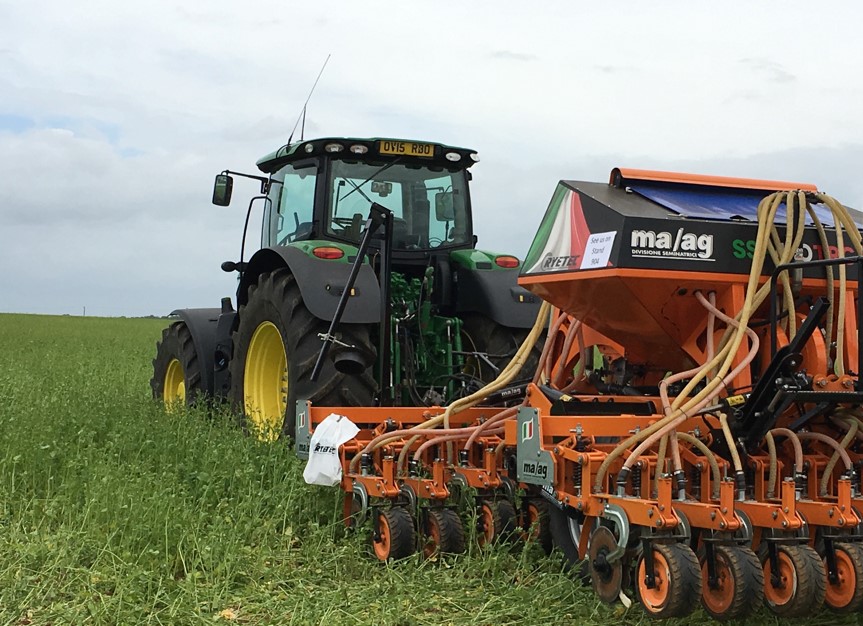 Will cover crops be a widely used weed control option?
Burndown options using non-selective herbicides in no-till could disappear in Europe.
Will cover crops be a widely used weed control option?
Burndown options using non-selective herbicides in no-till could disappear in Europe.
Paraquat is no longer registered and diquat, glyphosate and glufosinate are under regulatory pressure. Is there any new chemistry in the pipeline; will precision technologies help; what is the future for bioherbicides and organic practices? This article reviews alternative scenarios.
No new herbicides
New herbicides are increasingly rare. In the past five years only eight have been given ISO common names, compared to eighteen new fungicides and eighteen new insecticides.1 No new herbicide mode of action has been commercialised for thirty years. Paraquat (early 1960s), glyphosate (mid 1970s) and glufosinate (mid 1980s) are long established. The few other non-selective herbicides commercialised have been for total vegetation control in non-agricultural situations or in orchards and plantations where crops are protected by bark and deep roots. In terms of efficacy, weed spectrum and absence of soil residual effects, no herbicides have ever come close to glyphosate, glufosinate and paraquat.
Dow AgroSciences’s halauxifen-methyl (Arylex™) was approved for sale in 2015, but is the only new herbicide active ingredient to have been registered in the EU for more than ten years. Recently launched as Elevore™ for burndown in the US, it controls only broadleaved weeds and is for mixing with glyphosate. BASF’s broadleaf herbicide saflufenacil (Kixor™) is also used in mixture with glyphosate for burndown in the US. New broad-spectrum active ingredients for burndown will not be available for decades.
Mixtures of herbicides
Mixtures of broadleaved and grass weed herbicides might provide a good enough spectrum of weed control. However, there are many issues, e.g. achieving wide enough crop selectivity; antagonism between different modes of action; and formulation challenges. Apart from significantly increased costs, they are unlikely to replicate paraquat’s speed of action or glyphosate’s control of perennials.
Advances in precision farming technologies are being made with respect to sensing the presence of weeds and remote identification of species. Trimble has commercialised precision spot-spraying technology (WeedSeeker).2 In the future, systems for burndown could be possible in which, according to on-the-move diagnosis of weeds present, micro-doses of herbicides from an on-board panel are spot-sprayed on to leaves, avoiding the soil, but this is currently an early-stage research topic.3
Bioherbicides
A few bioherbicides, e.g. based on fungal pathogens, have been used in commercial practice, but these are highly specific and control a very narrow range of species, often slowly.4 An exception is the bacterial extract bialophos (bilanofos) of which the active isomer of glufosinate is one of the three amino acids comprising the molecule. Although commercialised in Japan, bialophos needs high rates and glufosinate has been the preferred global option.
Fatty acid herbicides, usually based on pelargonic acid, have been used to achieve ‘paraquat-like’ effects, but mainly in the home and garden sector and in vegetable production, not in arable crops.5
Organic weed control
Organic approaches to weed control for no-till have most successfully involved cover crops.6 These are winter annuals, planted before the intended crop. They are selected for their vigorous early growth and legumes are often used for their nitrogen contribution to soil fertility. Examples are rye and the legume hairy vetch (Vicia villosa).
The cover crop is either rolled and crimped to aid desiccation or mowed and chopped to create a mulch that provides a barrier to weed emergence. The crop is then planted into the mulch. The image above shows a demonstration of no-till sugar beet being drilled into a radish (Raphanus raphanistrum) cover crop in the UK. However, this technique has generally been used for transplanted vegetables. There is interest in using cover crops for no-tilling row crops, but the technique would not seem feasible for crops grown in narrow rows like cereals.
Flaming is another organic weed control technique, but with obvious issues, particularly for use on a large scale and well-established weeds tend to grow back if leaves are only scorched.7
Conclusions
No chemical herbicide solutions could effectively replace the current non-selective herbicides. Other approaches, e.g. the use of cover crops, may have limited success in certain specific cropping systems but could not match herbicides in terms of the efficacy of weed control or widespread utility. Some form of rotational tillage or strip-tillage would probably be needed in any alternative system of integrated approaches to preparing fields for planting with minimal soil disturbance.8
References
- Compendium of Pesticide Common Names
- Trimble WeedSeeker spot spray system
- Young, S L & Giles DK (2013). Targeted and micro-dose chemical applications. University of Nebraska, Lincoln, USA.
- Agrow report Biopesticides 2016
- Emerion™ fatty acid based herbicides
- Schonbeck, M (2015). What is “Organic No-till” and is it practical? Virginia Association for Biological Farming.
- No-Till Farmer (2018). Dry the weeds, keep the crops.
- Westwood, J H et al. (2017). Weed management in 2050: Perspectives on the future of weed science. Weed Science (pre-print).

